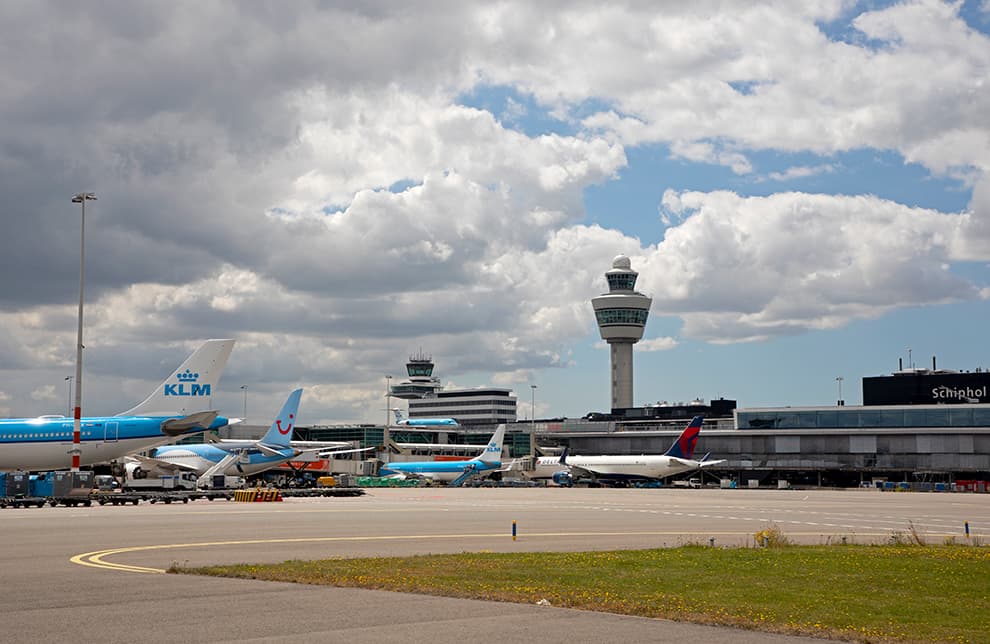Airline efforts
More efficient and cleaner aircraft, carbon offsetting, high capacity utilisation, alternative and less food packaging on board. Airlines are taking an increasing number of sustainability measures.

Fleet renewal
New aircraft make a significant contribution to reducing emissions. They are a lot more efficient than their predecessors. KLM took a big leap forward by conducting long haul flights using new Dreamliners (Boeing 787) instead of the classic Boeing 747s. Aeroméxico and Etihad Airways have also been deploying the new 787 since 2017. Another quiet and economical aircraft used for long distances is the Airbus 350. Singapore Airlines, Cathay Pacific, Delta Airlines and China Airlines use this aircraft at destination Amsterdam. The COVID-19 crisis has accelerated the phasing out of the Boeing 747 and A380.
Lighter flights
Airlines are also reducing CO₂ emissions by carrying less weight. For example, service trolleys are less heavy, less packaging is used for food on board and a lighter paint is even being used for the exterior of airplanes. The lighter the aircraft, the less kerosene is required.
This is what KLM does
KLM is a big player in the aviation sector and the biggest at Schiphol. The airline has been actively committed to reducing CO₂ emissions for several years now. It set up the Carbon Reduction Roadmap for this purpose, and has offered carbon offsetting to travellers since 2008.
What easyJet is doing
easyJet is committed to reducing carbon emissions and pursuing CO2 emission-free solutions for the future. One of the ways they are doing this is by contributing to the development of hybrid and electric aircraft. In addition, the airline continues to make their existing operation more efficient. This includes taxiing with only one engine and introducing more fuel-efficient aircraft into their fleet.